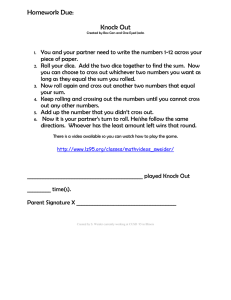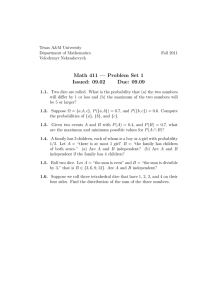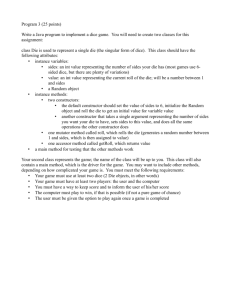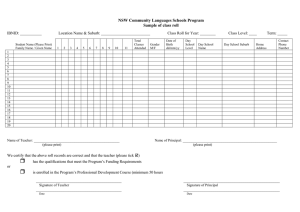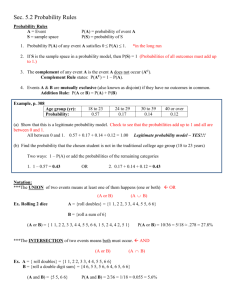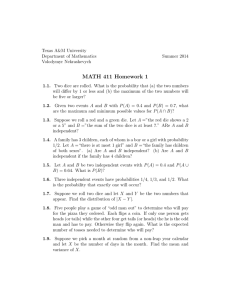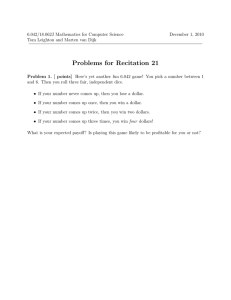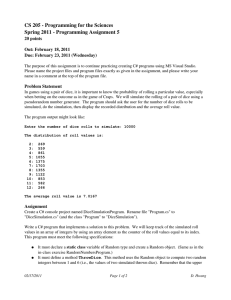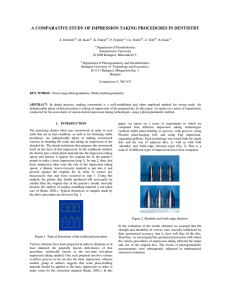More Sample Spaces and Set Notation Examples
advertisement
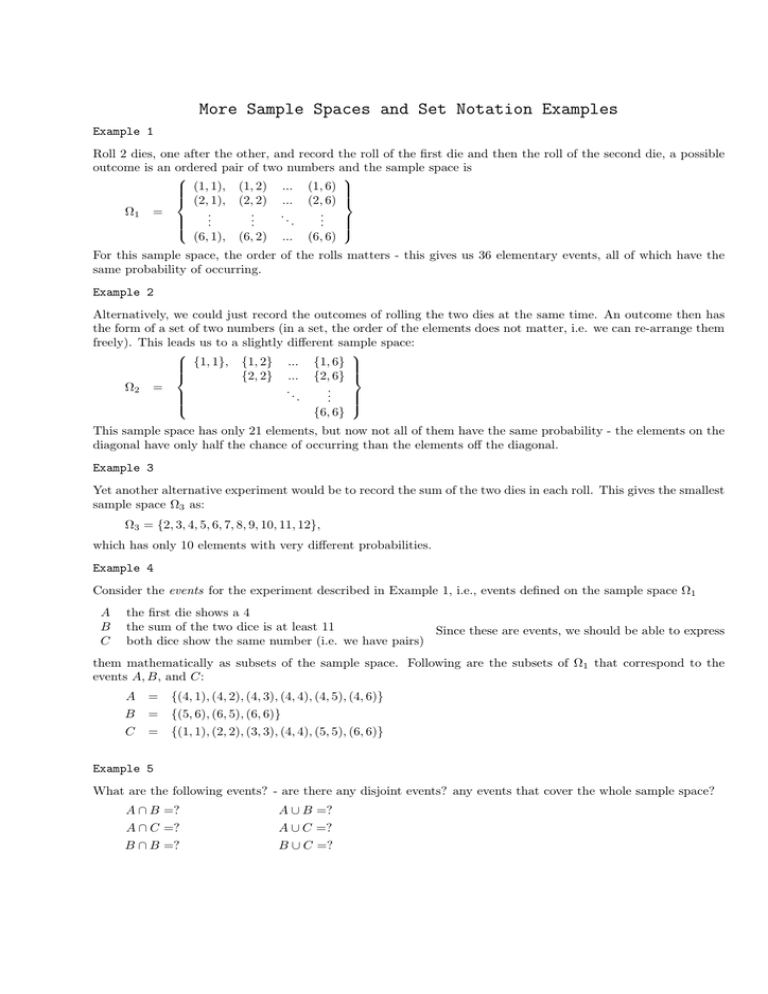
More Sample Spaces and Set Notation Examples
Example 1
Roll 2 dies, one after the other, and record the roll of the first die and then the roll of the second die, a possible
outcome is an ordered pair of two numbers and the sample space is
(1, 1), (1, 2) ... (1, 6)
(2, 1), (2, 2) ... (2, 6)
Ω1 =
..
..
.
..
..
.
.
.
(6, 1), (6, 2) ... (6, 6)
For this sample space, the order of the rolls matters - this gives us 36 elementary events, all of which have the
same probability of occurring.
Example 2
Alternatively, we could just record the outcomes of rolling the two dies at the same time. An outcome then has
the form of a set of two numbers (in a set, the order of the elements does not matter, i.e. we can re-arrange them
freely). This leads us to a slightly different sample space:
{1, 1}, {1, 2} ... {1, 6}
{2, 2} ... {2, 6}
Ω2 =
..
..
.
.
{6, 6}
This sample space has only 21 elements, but now not all of them have the same probability - the elements on the
diagonal have only half the chance of occurring than the elements off the diagonal.
Example 3
Yet another alternative experiment would be to record the sum of the two dies in each roll. This gives the smallest
sample space Ω3 as:
Ω3 = {2, 3, 4, 5, 6, 7, 8, 9, 10, 11, 12},
which has only 10 elements with very different probabilities.
Example 4
Consider the events for the experiment described in Example 1, i.e., events defined on the sample space Ω1
A
B
C
the first die shows a 4
the sum of the two dice is at least 11
Since these are events, we should be able to express
both dice show the same number (i.e. we have pairs)
them mathematically as subsets of the sample space. Following are the subsets of Ω1 that correspond to the
events A, B, and C:
A
= {(4, 1), (4, 2), (4, 3), (4, 4), (4, 5), (4, 6)}
B
C
= {(5, 6), (6, 5), (6, 6)}
= {(1, 1), (2, 2), (3, 3), (4, 4), (5, 5), (6, 6)}
Example 5
What are the following events? - are there any disjoint events? any events that cover the whole sample space?
A ∩ B =?
A ∪ B =?
A ∩ C =?
B ∩ B =?
A ∪ C =?
B ∪ C =?
Example 6
Experiment is retreiving a web page. Time required to retrieve and display a particular web page is of interest.
Recall that the sample space is
Ω4 = (0, ∞)
Let A, B, C and D be events defined on the sample space Ω4 :
A = [100, 200), B = [150, ∞), C = [200, ∞) and D = [50, 75].
Then A ∪ B = [100, ∞) and A ∪ C = [100, ∞) and A ∪ D = [50, 75] ∪ [100, 200]
Example 7
Let A, B, C and D be the events defined as above.
Then
A∩B
A∩D
=
=
[100, 200) ∩ [150, ∞) = [150, 200)
[100, 200) ∩ [50, 75] = ∅
